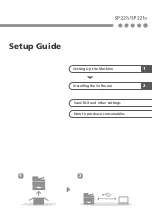
20
Elements of Card Design
Bar Code Guidelines
Bar
codes
more
successfully
when
you
observe
the
following
guidelines.
Bar Code Placement
•
Maintain
the
required
quiet
zone
around
the
actual
bar
code,
as
shown
in
the
illustration.
•
Locate
bar
codes
at
least
0.25
inch
(6.3mm)
from
other
printing
and
from
the
edge
of
the
card.
•
For
best
results,
orient
the
card
so
the
bars
are
parallel
to
the
long
edges
of
the
card,
as
shown.
This
orientation
most
accurately
prints
readable
bar
codes.
Bar Code Size
•
A
lower
density
bar
code
is
easier
to
read,
because
the
bars
are
wider
and
spaced
farther
apart.
•
The
width
of
the
narrow
elements
in
the
bar
code
must
be
large
enough
to
be
read
consistently.
The
capabilities
of
the
bar
code
reader
might
influence
this.
•
The
bar
code
must
be
tall
enough
to
be
read
under
normal
conditions.
Bar Code Print Settings
•
To
achieve
the
best
quality
printing
and
improve
the
readability
of
the
bar
code,
use
the
K
(black)
panel
of
color
ribbon
to
the
black
bars.
Bar
codes
printed
with
YMC
panels
are
not
as
crisp
and
sharp
as
those
printed
with
K
only.
•
Infrared
readers
require
that
the
K
panel
be
used
to
the
bar
code.
•
Bar
codes
are
usually
more
readable
when
they
are
printed
with
less
power.
•
The
ANSI
standard
for
bar
code
quality
(X3.182)
assigns
a
grade
to
a
bar
code
to
indicate
its
readability.
Choose
a
K
power
value
and
bar
code
size
to
produce
the
grade
your
system
requires.
Refer
to
“Printer
Setting
Menu”
on
page
38
for
information
on
setting
the
K
power
value.
Summary of Contents for CD Series
Page 4: ...iv...
Page 8: ...viii...
Page 22: ...14 Installation...
Page 40: ...32 Elements of Card Design...
Page 74: ...66 Printer Manager...
Page 86: ...78 Supplies and Parts...
















































